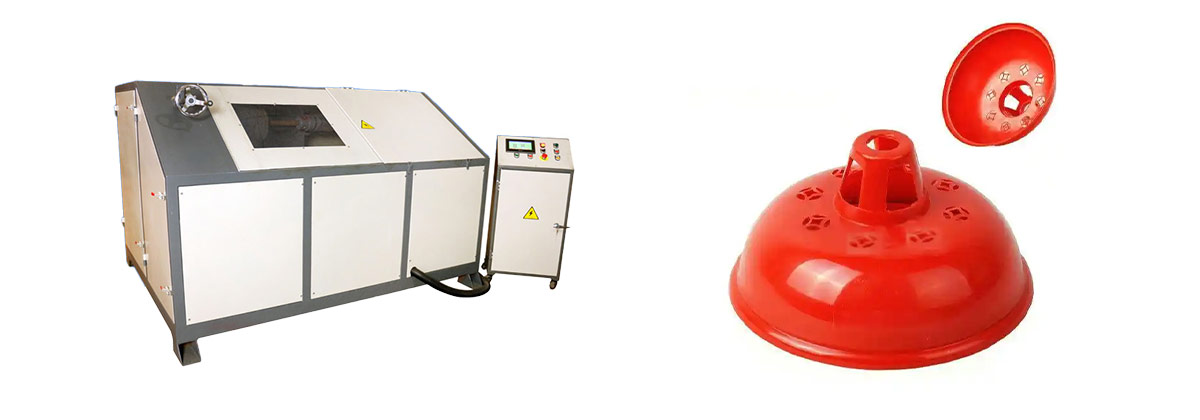

Aerospace maintenance demands precision and attention to detail. Plastic polishers play a vital role in preserving the safety and efficiency of aircraft components. These tools restore the surfaces of plastic parts, ensuring they remain functional and reliable. Cockpit windows, interior panels, and external components often face wear from environmental exposure. Plastic polishing removes scratches and imperfections, enhancing clarity and durability. This process not only improves the appearance of these parts but also extends their lifespan. By maintaining critical components, plastic polishers contribute to the overall performance of aerospace systems.
Key Takeaways
- Plastic polishers fix and protect plastic surfaces, making them clear and strong.
- Polishing cockpit windows often removes scratches and glare, helping pilots see better and stay safe.
- Cleaning inside plastic panels keeps them looking nice and strong, making the cabin look professional.
- Using proper tools and methods for polishing stops damage and keeps airplane parts in good shape.
- Spending on plastic polishing saves money and makes parts last longer, helping planes work better.
Understanding Plastic Polishers in Aerospace
What Are Plastic Polishers?
Plastic polishers are tools or substances designed to restore and maintain the surfaces of plastic materials. These polishers remove scratches, haze, and other imperfections that accumulate over time. They work by smoothing the surface and enhancing its clarity and appearance. In aerospace, plastic polishers play a crucial role in maintaining the integrity of various components. Their application ensures that plastic parts remain functional and visually clear, which is essential for safety and performance.
Plastic polishing involves the use of specialized compounds, pads, and techniques. These tools are tailored to address the unique properties of plastic materials. Unlike metal or glass, plastic requires a gentler approach to avoid damage. The process not only improves the aesthetic quality of the material but also extends its lifespan. By preventing further degradation, plastic polishers contribute to the durability and reliability of aerospace parts.
Applications in Aerospace Parts
Cockpit Windows and Canopies
Cockpit windows and canopies are vital for pilot visibility. Over time, these components can develop scratches, cloudiness, and other imperfections due to environmental exposure. Plastic polishing restores their optical clarity, ensuring pilots have an unobstructed view. This process also reduces glare, which enhances safety during flight operations.
Interior Plastic Panels
Interior plastic panels in aircraft cabins often endure wear and tear from frequent use. Scratches, scuffs, and discoloration can affect their appearance and functionality. Polishing plastic panels removes these imperfections, giving them a renewed look. This maintenance step also helps preserve the cabin’s aesthetic appeal and structural integrity.
External Plastic Components
External plastic components, such as light covers and fairings, face harsh environmental conditions. UV radiation, debris, and weathering can cause surface damage. Regular plastic polishing protects these parts by removing surface imperfections and adding a layer of protection. This ensures that external components remain durable and perform effectively in demanding conditions.
Benefits of Plastic Polishing for Aerospace Parts
Enhancing Durability
Preventing Surface Degradation
Plastic polishing plays a significant role in preventing surface degradation in aerospace components. Over time, environmental factors such as UV radiation, moisture, and debris can cause plastic surfaces to deteriorate. Polishing plastic removes these imperfections and creates a smooth, scar-free surface. This process not only restores the original quality of the material but also fills pits and scratches, making the surface more resistant to water and moisture. By addressing these vulnerabilities, plastic polishers ensure that aerospace parts maintain their structural integrity and functionality.
Reducing Wear and Tear

Frequent use and exposure to harsh conditions can lead to wear and tear on plastic components. Plastic polishing enhances durability by increasing resistance to these stresses. The process strengthens the surface, reducing the likelihood of cracks or further damage. Additionally, it preserves the original dimensions of the part, ensuring that it continues to fit and function as intended. The table below highlights the primary benefits of enhancing durability through plastic polishing:
| Benefit | Description |
|---|---|
| Premium-surface quality | Creates a smooth, scar-free surface, ensuring no impurities and a glowing finish. |
| Water and moisture resistant | Fills pits and scratches, increasing resistance to moisture and external elements. |
| Aesthetics and Enhancements | Removes impurities for a high-gloss finish, enhancing the visual appeal of parts. |
| Durability and Dimensional Privilege | Enhances durability by increasing resistance to wear and tear while maintaining original dimensions. |
Improving Safety and Visibility
Restoring Optical Clarity
Plastic polishers are essential for restoring optical clarity in critical aerospace components like cockpit windows and canopies. Scratches and cloudiness can obstruct a pilot’s view, compromising safety during flight. Plastic polishing removes these imperfections, ensuring a clear and unobstructed view. This restoration process improves visibility, which is vital for safe navigation and operation.
Reducing Glare and Scratches
Glare and scratches on plastic surfaces can create distractions and reduce visibility. Polishing plastic eliminates these issues by smoothing the surface and reducing light distortion. This improvement enhances safety by providing a clearer view for pilots and crew members. Regular maintenance with plastic polishers ensures that these components remain in optimal condition.
Extending Component Lifespan
Lowering Maintenance Costs
Plastic polishing extends the lifespan of aerospace components, reducing the need for frequent replacements. By addressing surface imperfections early, the process prevents further damage that could lead to costly repairs. This proactive approach lowers overall maintenance costs and ensures that parts remain functional for longer periods.
Increasing Operational Efficiency
Well-maintained plastic components contribute to the overall efficiency of aerospace systems. Polished surfaces reduce drag and improve aerodynamics, enhancing performance. Additionally, the extended lifespan of these parts minimizes downtime for repairs or replacements. Plastic polishers play a crucial role in maintaining the reliability and efficiency of aerospace operations.
Tools and Techniques for Polishing Plastic
Essential Tools for Plastic Polishing
Polishing Pads and Cloths
Polishing pads and cloths are indispensable for achieving smooth and clear surfaces on plastic components. These tools are designed to gently remove imperfections without causing damage. High-quality microfiber cloths and foam pads are commonly used in aerospace maintenance. They ensure even application of polishing agents and prevent scratches during the process. Specialized equipment, such as the Eneska Micromotor and variable speed bench polishers, provides precise control over the polishing process. Controlling speed is critical to avoid overheating, which can lead to discoloration or warping of the plastic.
Specialized Compounds
Plastic polishing compounds play a vital role in restoring the surface quality of aerospace components. These compounds are formulated to address specific issues, such as scratches, haze, and discoloration. For example, TEX-WHIZ® Aircraft Windshield Polishing Compound is widely used for its effectiveness on military-grade canopies. These compounds not only enhance the appearance of plastic parts but also improve their functionality by reducing drag and increasing optical clarity.
Techniques for Effective Plastic Polishing
Step-by-Step Process
Polishing plastic requires a systematic approach to achieve optimal results. The following steps outline an effective process:
- Preparation of the Parts: Clean the plastic parts thoroughly to remove dirt and residues.
- Heating the Solvent: Heat the solvent in a vapor tank until it vaporizes.
- Exposure to Vapor: Suspend the clean parts in a chamber exposed to solvent vapors.
- Cooling and Final Inspection: Allow the parts to cool and inspect them for quality.
This method ensures that the plastic surface is restored to its original condition while maintaining its structural integrity.
Managing Heat During Polishing
Heat management is crucial when polishing plastics. Excessive heat can cause the material to warp or discolor. Using variable speed polishers allows technicians to control the temperature during the process. Applying light pressure and using cooling agents can further minimize heat buildup. These precautions ensure that the plastic remains undamaged and retains its original properties.
Recommended Products for Aerospace Use
PPG TEX-WHIZ and AVL-Clear View
PPG TEX-WHIZ® Aircraft Windshield Polishing Compound is a trusted product in aerospace maintenance. It is approved for military use and is highly effective on F-16 canopies. AVL-Clear View, another popular choice, provides a hydrophobic coating that enhances visibility and protects against UV radiation. Both products are designed to meet the rigorous demands of aerospace applications.
Novus Plastic Polish and Plexus Cleaner
Novus Plastic Polish is ideal for removing fine scratches and restoring clarity to plastic surfaces. Plexus Cleaner, on the other hand, cleans and protects plastic components by forming a protective layer. These products are widely recommended for their ability to maintain the aesthetics and functionality of aerospace parts.
Real-World Impact of Plastic Polishing in Aerospace
Case Studies in Maintenance
Restoring Cockpit Window Clarity
Cockpit windows often face scratches and cloudiness due to environmental exposure. These imperfections can obstruct a pilot’s view, creating safety risks. Maintenance teams use polishing plastic techniques to restore the optical clarity of these windows. By removing scratches and haze, they ensure pilots have an unobstructed view during flight. This process also reduces glare, which enhances visibility in bright conditions. Regular polishing helps maintain the functionality and safety of cockpit windows, which are critical for navigation.
Repairing Interior Panel Scratches
Interior plastic panels in aircraft cabins endure frequent wear from passengers and crew. Scratches and scuffs can accumulate over time, diminishing the cabin’s appearance. Polishing plastic surfaces removes these imperfections, restoring the panels to their original condition. This maintenance step not only improves aesthetics but also preserves the structural integrity of the panels. Airlines benefit from this process by maintaining a professional and appealing cabin environment for passengers.
Benefits for Maintenance Efficiency
Cost Savings from Regular Polishing
Regular polishing of plastic components reduces the need for frequent replacements. By addressing surface damage early, maintenance teams prevent further deterioration that could lead to costly repairs. This proactive approach lowers overall maintenance expenses. For example, polishing cockpit windows and interior panels extends their lifespan, minimizing downtime and replacement costs. Airlines save money while ensuring their aircraft remain operational and safe.
Improved Safety and Performance Outcomes

Polished plastic components contribute to better safety and performance in aerospace operations. Clear cockpit windows improve visibility, reducing the risk of accidents. Smooth external surfaces enhance aerodynamics, which improves fuel efficiency. The table below highlights how these benefits translate into operational advantages for aerospace companies:
| Benefit Type | Details |
|---|---|
| Weight Reduction | Achieved a 1,650-pound weight reduction on Boeing 747 platforms through Ultem® implementation. |
| Cost Savings | Annual fuel cost reduction of $65,000 per aircraft due to lighter materials. |
| Maintenance Optimization | Reduced maintenance needs due to chemical resistance and extended operational life. |
| Environmental Performance | Decreased carbon footprint and operational emissions through mass reduction. |
These outcomes demonstrate the value of maintaining plastic components through regular polishing. Airlines achieve cost savings, improved safety, and enhanced environmental performance by prioritizing this maintenance practice.
Conclusion
Plastic polishers play a pivotal role in maintaining aerospace standards. They prevent material degradation, enhance visibility, and ensure compliance with safety regulations. By addressing surface imperfections, they contribute to the durability and reliability of critical components. Their use also reduces maintenance costs and extends the lifespan of parts.
Proper tools, techniques, and products are essential for effective plastic polishing. Maintenance teams should use aviation-approved cleaning products, wear protective equipment, and follow systematic procedures. Training staff and documenting activities further ensure safety and efficiency. These practices highlight the value of investing in high-quality solutions for aerospace maintenance.
